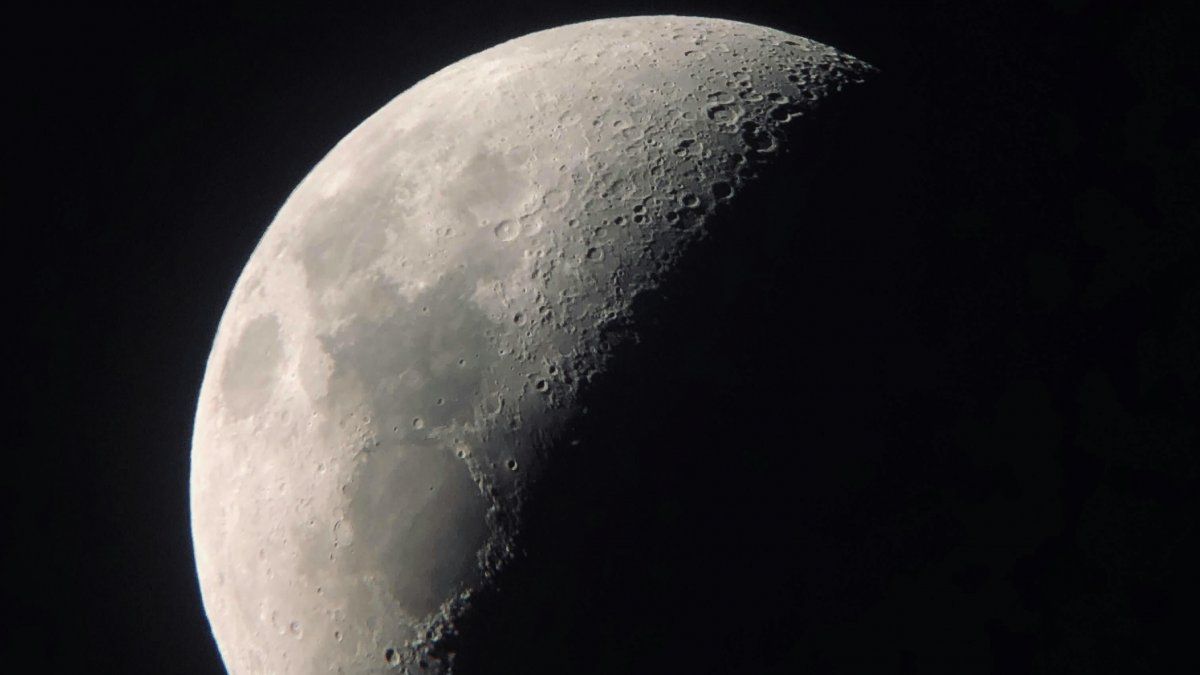As your ancestors did, Nora AlMatrooshi She also studied the stars and since she was a child dreamed of traveling to the Moon. This week She became the first Arab female astronaut to graduate from a NASA program and is ready to fulfill that desire.
After two years of hard training, which included spacewalk simulations, Nora and pilot Mohammad AlMulla officially became Emirati astronauts, along with ten other applicants from the US space agency.
Who is the first Arab female astronaut?
Born in 1993 in Sharjah, United Arab Emirates, says that at school, during a class where they talked about space, the teacher simulated a trip to the Moon. She set up a tent in the classroom like a spaceship where The students entered and took flight. Then, they had to go out for a moon walk.
moon.jpg
What was the process of practicing to go to the moon for the first Arab woman.
“We saw that she had turned off the lights in our classroom, she had everything covered with a gray cloth. And she told us that we were on the surface of the Moon. That day stuck in my mind“he says to the AFP, clad in her blue astronaut suit, which bears her name and the flag of her country. “I remember thinking: This is amazing, I really want to do this, I want to get to the surface of the Moon. And that’s when it all started,” he said.
A mechanical engineer with experience in the oil industry, Nora was one of the two astronaut candidates selected by the United Arab Emirates Space Agency in 2021 to be trained in a NASA program, thanks to a cooperation plan.
NASA’s chosen ones to go to the Moon
These members of the promotion “The Flies” (The Flies) now are eligible for NASA missions to the International Space Station (ISS), in the Artemis missions to the Moon and, if all goes well, to Mars. In fact, The Emirati agency announced this year that it will build the airlock – the exit and entry channel to the ship – for the Gatewayhumanity’s future first space station around the Moon.
“I want to take humanity further than ever before. I want humanity to return to the moonfor humanity to go beyond the Moon and be part of that journey,” he explained.
Other Arab women had already participated in private missions to spacesuch as the Saudi biomedic Rayyanah Barnawi, part of the second Axiom Space mission to the ISS in 2023, or the Egyptian Sara Sabry, who in 2022 crewed the Blue Origin NS-22 spacecraft on a suborbital flight.
How the Muslim woman made the hijab
Due to his Muslim faith, AlMatrooshi has her hair covered with a hijab. The NASA put together a plan so that her hair would not be uncovered when she had to put on that enormous white diving suit with helmet, the EMU (Extravehicular Mobility Unit, in English).
“Once inside the spacesuit, you must put on a communication cap [capucha que lleva micrófonos y audífono], which also covers your hair. But first there is a space where I don’t wear anything over my hair and I have to put on the communication cap, and we had to solve that,” details.
Inside the EMU you cannot wear your conventional hijab, because only garments with specific authorized materials can be worn. “So NASA engineers sewed a makeshift hijab for me, so I could put it on, get into the suit, put on the communication cap, then take off the hijab and so my hair would always be covered. I appreciate that they did that for me,” she says.
The US plan to reach the Moon
USA plans to take astronauts to the surface of the Moon again in 2026, within the framework of the Artemis 3 mission, according to NASA.
“I think becoming an astronaut is difficult, regardless of what your religion or background is. So I don’t think being Muslim would make it more difficult,” commented AlMatrooshi.
“But being Muslim made me aware of the contributions of my ancestors, of the Muslim scholars and scientists who came before me who studied the stars, and becoming an astronaut is simply building on that legacy of what they started thousands and thousands of years ago,” he said.
Source: Ambito




